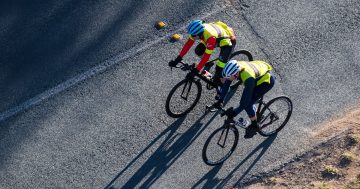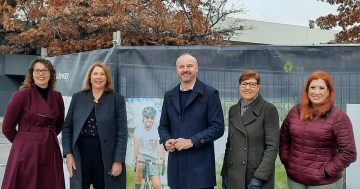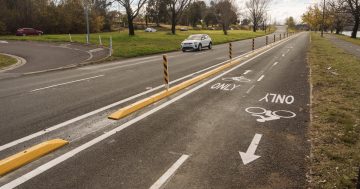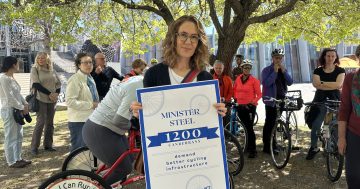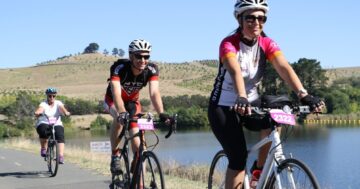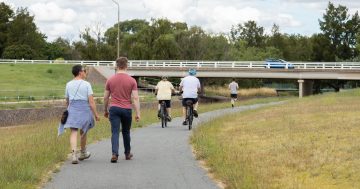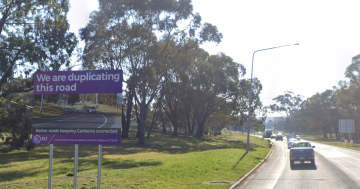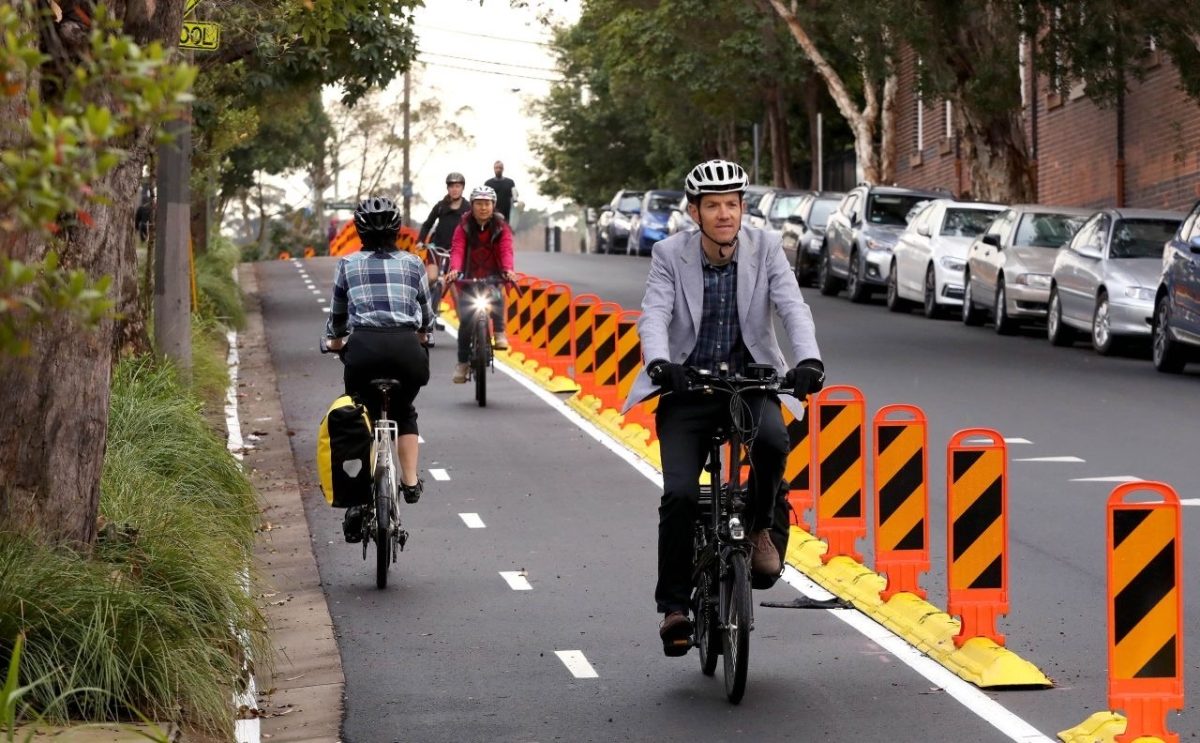
A pop-up cycle lane (similar to the one pictured) will be piloted on Bowen Drive in Kingston. Photo: Supplied.
Canberra’s on-road cycling lanes could soon become much brighter if a Kingston trial is labelled a success.
A trial of a two-way protected cycle lane will be established on Bowen Drive between Kings Avenue Bridge and the Bowen Park car park to see if it’s a viable option to provide separation between cyclists and motorists.
City Services Minister Tara Cheyne said this was based on feedback from the community and advocacy groups about the need for the government to invest in separated cycling infrastructure to make cycling safer and more accessible.
“The protected cycle lane will provide much-needed additional capacity for cyclists to address the current heavy use of the route around Lake Burley Griffin to the Kingston Foreshore. Importantly, it will provide separation between pedestrians, cyclists and motorists,” she said.
“The trial of this infrastructure will influence future decision-making about the roll-out of similar infrastructure in other areas of Canberra.”
The trial is stage one of the two-stage Kingston Cycleway project, which will deliver new and upgraded cycling infrastructure from the Kings Avenue Bridge to Cunningham Street.
Design work is expected to begin soon on the second stage of the Kingston Cycleway to deliver new and upgraded active travel infrastructure.
Construction on the separated cycleway will begin in the coming weeks and is forecast to take about two months.
The cycleway will be made from recycled and sustainable materials.
Once construction was complete, Ms Cheyne said signage would be installed delineating the cycle lane from the now pedestrian-only off-road path.
“We want more Canberrans to choose to walk or ride to their destination and we recognise a key component in increasing the uptake of active travel is in the infrastructure available,” she said.
Pop-up cycleway projects are intended to provide the same safety outcomes as traditional infrastructure, but they’re made of temporary materials and are generally less expensive to build.
More than $30 million in active travel improvements were announced in the 2023-24 ACT Budget and subsequent mid-year budget review, bringing the total to more than $94 million over the forward estimates.
Ms Cheyne said investment was continuing on feasibility studies and design work to strengthen the future active travel network, ensure the government’s priorities matched those of Canberrans, and support the city’s growth.
“Significantly, this includes more pop-up and quick-build projects with a consultancy tender currently out to market to identify what is required to facilitate these projects, what they may look like and what locations would be suitable for this type of infrastructure,” she said.
“We want more Canberrans to walk and ride more often across our extensive path network. Providing new infrastructure and enhancing our existing network to make it safer and more attractive is a key deliverable in achieving this.”
More information on planned and in progress active travel improvements can be found on the City Services website.












